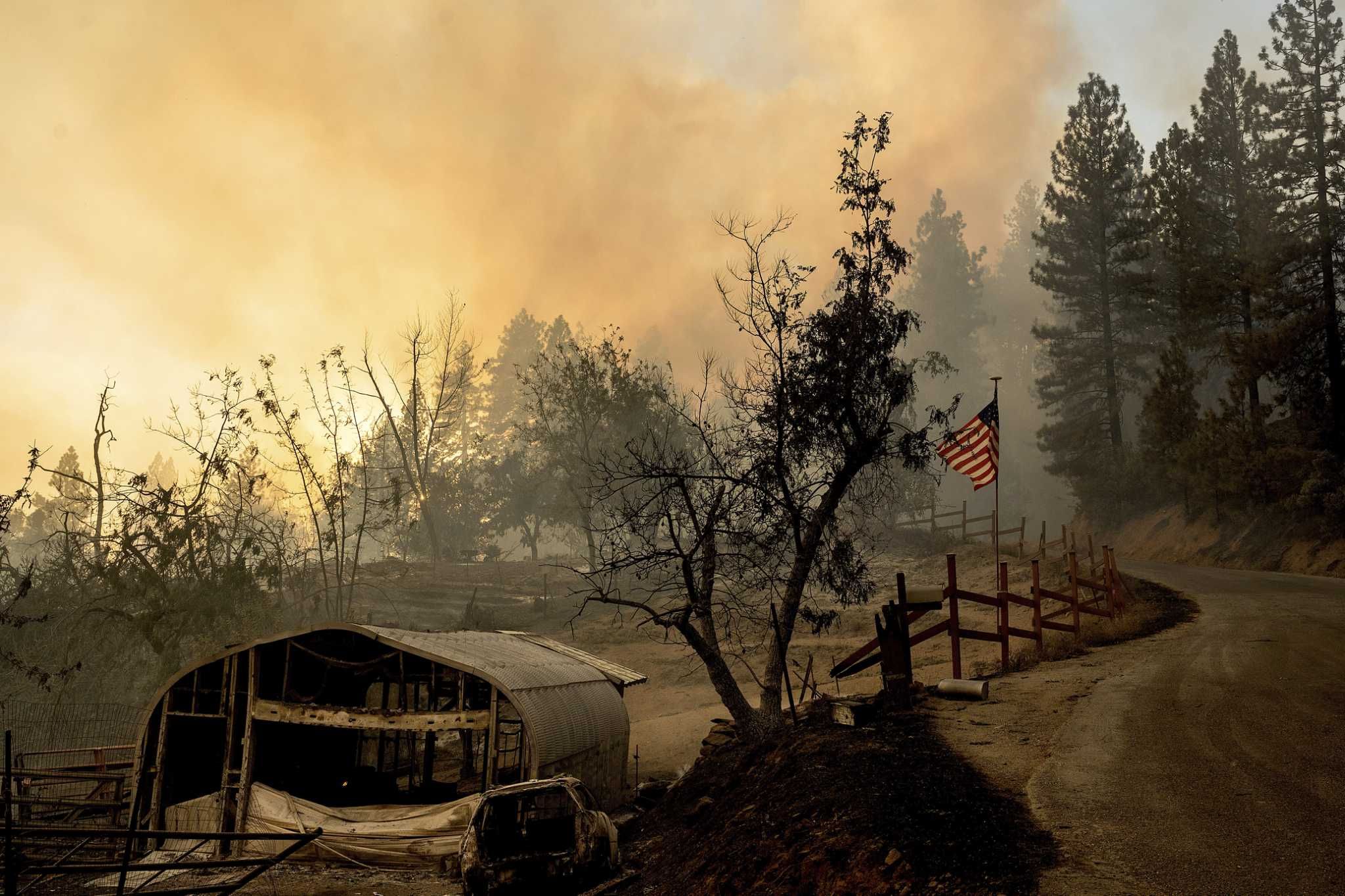California's largest property insurer halts new policies, cites fires
State Farm, California’s largest property and casualty insurer as of 2021, stopped issuing home, business and casualty insurance policies in the state Saturday, citing wildfire risks and rising construction costs.
In a statement issued Friday, the company said it made the decision “due to historic increases in construction costs outpacing inflation, rapidly growing catastrophe exposure, and a challenging reinsurance market.”
“We take seriously our responsibility to manage risk,” the company’s statement read. “We recognize the Governor’s administration, legislators, and the California Department of Insurance for their wildfire loss mitigation efforts. We pledge to work constructively with the CDI and policymakers to help build market capacity in California. However, it’s necessary to take these actions now to improve the company’s financial strength.
State Farm will still issue auto insurance in California.
The state has suffered increasingly massive and destructive wildfires in recent years, leading to scarcer and more expensive insurance policies in wildfire-prone zones. California has banned insurance companies from dropping homeowners in certain ZIP codes and issuing non-renewals for policies following wildfire emergency declarations as the state is scrambling to preserve insurance for its residents. The state also doubled coverage limits under the Fair Plan, the state’s insurer of last resort for homeowners and renters who can’t get coverage elsewhere, to $3 million in recent years.
Michael Soller, spokesperson for the California Department of Insurance, said in an email Saturday that state data shows that the number of companies writing homeowners insurance has stayed consistent over the past five years — at about 115.
“While insurance companies prioritize their short-term financial goals, the long-term goal of the Department of Insurance is protecting consumers,” Soller said. “The factors driving State Farm’s decision are beyond our control, including climate change, reinsurance costs affecting the entire insurance industry, and global inflation. The Department of Insurance is focused on the safety of our homes and communities. We have been here before after major wildfires. What’s different is the actions that we are taking with the first-ever insurance discount program for wildfire safety and unprecedented wildfire mitigation investments from the Legislature and Governor.”
Another home insurer, American International Group, pulled out of California last year, the Wall Street Journal reported. AIG focused on high-end homes while State Farm has a much larger footprint in the state.
State Farm was the largest underwriter of property and casualty insurance policies in California in 2021 with over $7 billion in premiums written, and a market share of 8.3%, according to the California Department of Insurance. Farmers Insurance had 7.9% and Berkshire Hathaway had 6.3%. The top 10 insurers control about half of the market in California. Numbers were not available for 2022.
State Farm has been the largest property and casualty insurer in California since at least 2014, according to the insurance department.
A UC Berkeley study last year warned that insurance companies were underestimating the cost of wildfire risks and judging risks lower than the state. The authors said the findings suggested that the financial firms “could soon find their own businesses financially wrecked, unless their risk models and pricing (and the government regulations overseeing both) undergo dramatic changes.”
Mark Sektnan, vice president for state government relations for the American Property Casualty Insurance Association, said he couldn’t comment on whether other insurers would also pull out of California, but said each company must balance the risks they assume with the losses they are paying out and make sure they can fulfill their promise to pay the claims of policyholders.
Sektan said the state was working with companies on “making sure insurers can charge rates that reflect the increasing risk of loss” because the current market struggles with inadequate rates that don’t cover the increased risks caused by climate change, the growing number of communities in wildfire-prone areas and inflation-driven costs. He said they’re all working to a common goal to mitigate wildfire risk.
Jennifer Gray Thompson, executive director of the Rebuild NorthBay Foundation, started in the wake of the 2017 wildfires, who went on to found After the Fire USA, said she was disappointed, but not shocked, by State Farm’s decision. She said a tightening insurance market will hit poor, rural communities the hardest, where homeowners may not have a mortgage and can’t afford insurance.
Fire Tracker Follow wildfires across the state Latest updates on wildfires burning across Northern and Southern California
“Then a megafire comes through and all of a sudden they’re just another person in America without a home making $25,000 a year,” she said. “FEMA will help, but will never make them whole.”
Thompson said she’s concerned other insurance providers could follow State Farm’s lead, but didn’t think they would all exit the state’s huge market.
“They have looked at the return on investments and said ‘Nope, the risk is too high, here is where we can’t invest anymore, this our exposure.’ But I do not see insurance companies pulling out of the California market. They’re going to find a way forward, and we also have to do our part as homeowners and landowners,” she said.
Thompson said insurance companies need to be more collaborative and aggressive with policyholders on reducing their wildfire risk. Her organization has administered state and federal grants to help vulnerable communities do that. She is hopeful that with new investments and developing technology, such as fire-retardant home paint, the state can solve megafires and save homes.
“I’m sorry insurance companies can’t hang on with us long enough to get to the other side,” she said.
Source: San Francisco Chronicle


